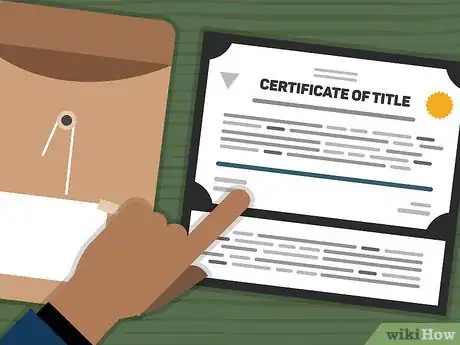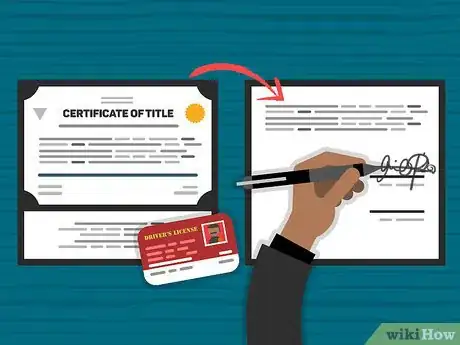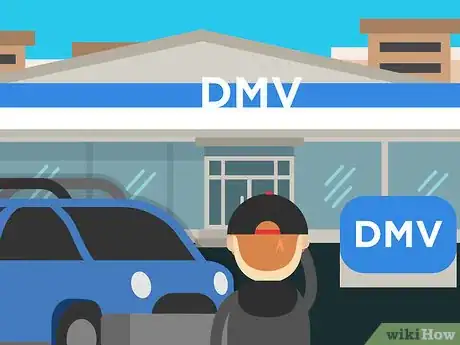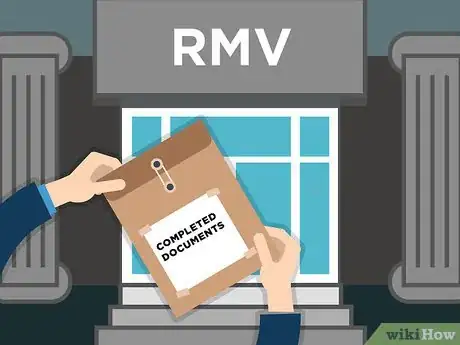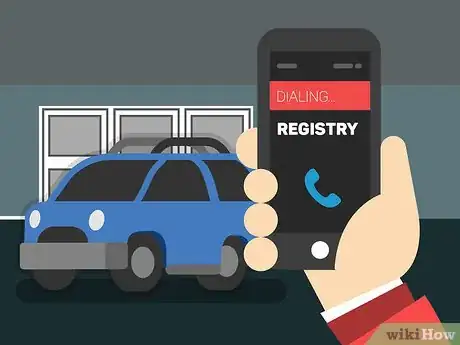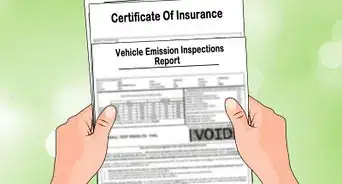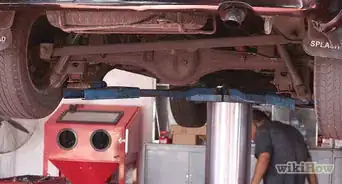This article was co-authored by Clinton M. Sandvick, JD, PhD. Clinton M. Sandvick worked as a civil litigator in California for over 7 years. He received his JD from the University of Wisconsin-Madison in 1998 and his PhD in American History from the University of Oregon in 2013.
wikiHow marks an article as reader-approved once it receives enough positive feedback. In this case, 87% of readers who voted found the article helpful, earning it our reader-approved status.
This article has been viewed 477,486 times.
There are several reasons you might decide to give a vehicle as a gift. Perhaps you are giving it to a family member, such as a child who just received a driver's license. Maybe you are donating it in order to purchase a new vehicle and you do not wish to sell your old one. Either way, the basic step involved in gifting a vehicle is to transfer the title of ownership, but several details might make this task more complex. You need to ensure that you own the vehicle in full. This means there can be no active liens on the vehicle. If you co-own the vehicle with another person, that person must be able to provide a signature as well (except in rare cases, such as death, at which point you might require the assistance of your local Probate Court as well as the executor of the estate of the deceased). Once the title is signed over to the new owner, it must be presented at the Department of Motor Vehicles to complete the title transfer.
Steps
Preparing for the Gift Transfer
-
1Verify ownership. This sounds obvious, but the first step before you can give away a vehicle is to make sure that you are the legal owner. To do that, you must have the title. The title is a certificate that you should have received from the dealer, probably after you paid off all the loans.[1] The title will name the rightful owner or owners of the vehicle.
- If you have lost your title certificate, you will need to get a replacement from your state’s Department of Motor Vehicles. Each state has a different procedure and fee for this. At http://www.dmv.org/replacing-a-lost-title.php you can find a handy map of the U.S. with contact information for the DMV in each state.
-
2Satisfy all liens. A lienholder is someone you borrowed money from, with the car as collateral. If you still owe them money, their name will appear on the title. Before you can give away the car, you must pay off all loans, and the lienholders must sign off on the title certificate that they have been paid.[2]Advertisement
-
3Involve Probate Court, if an inheritance. If the owner’s name on the title is someone who is deceased, and the gift is an inheritance, you may need to go to Probate Court to get an order for the transfer. Alternatively, in some states, it is possible to file a simple affidavit with the Registry of Motor Vehicles in order to take possession. You will need to check with your state law.[3]
- If the car was owned jointly by a married couple, for example, and one dies and the remaining owner wants to give the car away as a gift, the surviving individual can, in most cases, transfer the car alone. A copy of the death certificate may be needed to accompany the title.
Completing the Paperwork
-
1Complete the transfer section on the back of the title. The person giving the vehicle will be required to provide his or her signature, driver's license information and odometer information for the vehicle at the time of the gift. The person receiving the car must fill out the buyer portion of the title. Where the title asks for the sale price, you will fill in “Gift.”
- Be careful when completing these steps. Many title certificates specify that the writing must be done cleanly and clearly, with no erasures or cross-outs. Even a simple printing error could require you to obtain a new copy of the title certificate and start over.
-
2Get lienholders to sign off. If the lienholders have not yet already given you something to show that the loans are satisfied, you will need to have them sign off on the title as satisfied in full. If your loan was from a dealer, you will want to contact the lending department. If you obtained your loan from a bank or some other lending institution, then find your original loan paperwork. That will tell you who to contact for payoff information.
-
3Check with the state Registry of Motor Vehicles for additional gift requirements. In general, gifts between family members are freely allowed, and there would be no sales tax at the time of the transfer.[4] However, each state’s laws are different and you should check with your own state. Some states may require proof of a family relationship for the gift to be tax-free.
-
4Verify insurance for recipient. The person receiving the car will ordinarily have to demonstrate that he or she is covered by insurance before taking ownership. This is not exactly a concern for the person giving the gift, but the new owner, in order to drive the car, will have to get it insured and registered. The new owner's insurance company will usually issue the owner a card or letter to show proof of insurance.[5]
-
5Check inspection requirements. Some states will require the car to be inspected separately at the time of the transfer. Other states will not. You can check with your state's Department of Motor Vehicles to find out your requirements. In many states, this will require you to take the car to a licensed inspection station and undergo a safety inspection, emissions test, or other similar procedure.
Completing the Transfer
-
1Deliver the documents to RMV. In most states, the person receiving the gift will have to take the completed documents to the Registry of Motor Vehicles. You will turn in the original title, with all the completed signatures, along with whatever fee may be required.
-
2Register the car according to the state’s usual procedures. This will be up to the new owner of the car. Registration is the procedure in all states that certifies that the car may be licensed and driven in the state. In many states, you can call the Registry ahead of time to make an appointment.[6]
-
3Wait for the new title to arrive. As the recipient of a gift vehicle, you will need to receive a new title. The Registry will deliver this in your own name, usually within a couple weeks. When it arrives, check the new Certificate of Title to make sure that the information is all printed accurately. This document is your proof of ownership of the vehicle. If there are any errors, even if they appear minor (such as an incorrect middle initial, for example), these could cause trouble for you in the future. If you see any mistakes, notify the Registry of Motor Vehicles immediately. You will probably have to submit an application for a correction.[7]
Warnings
- Vehicle gifting laws, fees and taxes may differ from state to state. Check with your local Department of Motor Vehicles or tax professional for details before gifting your car.⧼thumbs_response⧽
References
- ↑ http://www.bankrate.com/finance/auto/obtaining-your-car-title-after-loan-payoff.aspx
- ↑ http://www.bankrate.com/finance/auto/obtaining-your-car-title-after-loan-payoff.aspx
- ↑ http://www.nolo.com/legal-encyclopedia/free-books/avoid-probate-book/chapter4-4.html
- ↑ https://www.rocketlawyer.com/article/changing-vehicle-ownership---getting-a-car-title-transferred-with-the-dmv.rl
- ↑ http://www.dmv.org/insurance/how-to-obtain-proof-of-insurance.php
- ↑ http://www.dmv.org/car-registration.php
- ↑ http://www.dmv.org/title-transfers.php
About This Article
To gift a vehicle, start by locating the title certificate and making sure it’s in your name. Then, pay off any remaining loans and get the lienholders to sign off on the title certificate. When you give the title to the new owner, have them fill out the back of it with their signature, driver’s license information, and odometer information. Finally, have the recipient take the completed documents to the Registry of Motor Vehicles and register the car according to the state’s usual procedures. To learn how to transfer the title from a deceased person, keep reading!
